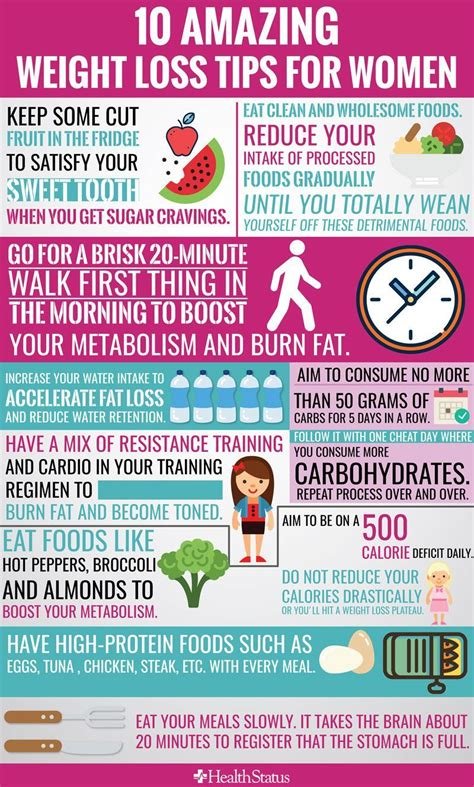Diet Tips for Women
Ladies, we all know that maintaining a healthy diet and lifestyle can be a challenge, especially with the demands of everyday life. However, it’s crucial to prioritize our health and well-being, and that often starts with our diet. In this blog post, we’ll discuss some essential diet tips for women that can help you achieve and maintain a healthy weight, boost your energy levels, and improve your overall well-being. From understanding the female metabolism to incorporating regular exercise routines and dealing with emotional eating habits, we’ll cover everything you need to know to develop a sustainable and realistic approach to a balanced diet. Whether you’re looking to shed a few extra pounds, improve your eating habits, or simply feel better in your own skin, these tips will guide you on your journey to better health. Let’s dive in and explore the keys to a healthier and happier you!
Understanding the female metabolism
Understanding the female metabolism is crucial for women’s health and well-being. The metabolism refers to the process by which the body converts food and drink into energy. It plays a vital role in weight management, energy levels, and overall health. However, the female metabolism is different from that of males due to various factors such as hormonal fluctuations and differences in body composition.
One of the key factors that affect the female metabolism is hormonal fluctuations. Throughout the menstrual cycle, women experience changes in hormone levels, which can impact their metabolism. For example, during the luteal phase, the body’s metabolic rate may increase, leading to higher energy expenditure. Understanding these fluctuations can help women make more informed choices about their diet and exercise routines to support their metabolism.
Another important aspect of understanding the female metabolism is recognizing the impact of body composition. Women generally have a higher percentage of body fat compared to men, which can influence their metabolic rate. Muscle mass, which is more predominant in males, has a higher metabolic rate compared to fat tissue. This means that women may have a lower basal metabolic rate, requiring adjustments in their dietary and exercise habits to support metabolism.
It’s essential for women to be mindful of their unique metabolic needs and make informed choices to support their overall health and well-being. By understanding the female metabolism, women can adopt personalized strategies for nutrition, exercise, and lifestyle habits that best support their individual needs and goals.
Importance of a balanced diet
A balanced diet is crucial for maintaining good health and overall well-being. It provides the necessary nutrients, vitamins, and minerals that our bodies need to function properly and stay healthy. When we consume a variety of foods from all the different food groups, we ensure that our bodies are getting all the essential nutrients they need to thrive.
Not only does a balanced diet support our physical health, but it also plays a significant role in our mental and emotional well-being. Nutrient-rich foods have been shown to have a positive impact on our mood and cognitive function. They can help to boost our energy levels, improve our concentration, and even reduce our risk of developing mental health disorders.
By incorporating a balanced diet into our daily lives, we can also reduce our risk of developing chronic diseases, such as heart disease, diabetes, and certain types of cancer. A diet that is high in fruits, vegetables, whole grains, and lean proteins can help to keep our bodies strong and resilient, protecting us from the onset of these illnesses.
Overall, the importance of a balanced diet cannot be overstated. It is the foundation of good health and has a profound impact on every aspect of our lives. By making mindful choices about the foods we eat, we can support our health and well-being for years to come.
Choosing the right portion sizes
When it comes to maintaining a healthy diet, one of the key factors to consider is portion sizes. Whether you are trying to lose weight, maintain your current weight, or simply improve your overall health, understanding how much food to eat is essential. It’s easy to overeat when portion sizes are not properly controlled, leading to unwanted weight gain and negative health effects.
One effective way to choose the right portion sizes is to use visual cues. For example, a serving of meat should be about the size of a deck of cards, a cup of pasta is about the size of a tennis ball, and a serving of cheese is about the size of four dice. By using these visual cues, you can better estimate appropriate portion sizes without needing to measure every meal.
Another important factor in choosing the right portion sizes is to listen to your body’s hunger and fullness cues. Pay attention to how your body feels before, during, and after a meal. If you finish eating and still feel hungry, you may need to increase your portion sizes. On the other hand, if you feel overly full or uncomfortable after a meal, you may have eaten too much.
It’s also crucial to consider the nutritional content of your meals when choosing the right portion sizes. For example, a serving of vegetables can be larger than a serving of pasta, as vegetables are lower in calories and higher in fiber. By adjusting portion sizes based on the nutritional value of the foods you are consuming, you can create a well-balanced and satisfying meal.
Including nutrient-rich foods
When it comes to maintaining a healthy diet, it’s important to include nutrient-rich foods in your daily meals. These are foods that are packed with essential vitamins, minerals, and other nutrients that are beneficial for your overall health. Including a variety of these foods in your diet can help to ensure that you are getting the necessary nutrients that your body needs to function properly.
One example of a nutrient-rich food is leafy green vegetables, such as spinach, kale, and arugula. These vegetables are high in vitamins A, C, and K, as well as folate and potassium. They are also a good source of fiber, which is important for digestive health. Including a serving of leafy greens in your meals every day can help to boost your nutrient intake.
Another important nutrient-rich food to include in your diet is fatty fish, like salmon, mackerel, and sardines. These fish are rich in omega-3 fatty acids, which are known for their heart-healthy benefits. Omega-3 fatty acids have been shown to reduce the risk of heart disease and stroke, as well as improve brain function. Aim to include fatty fish in your diet at least twice a week to reap the health benefits.
Additionally, it’s important to include a variety of fruits, nuts, seeds, and whole grains in your diet to ensure that you are getting a wide range of nutrients. These nutrient-rich foods are packed with vitamins, minerals, and antioxidants that can help to protect your body from disease and keep you feeling your best. By focusing on including these foods in your daily meals, you can improve your overall health and well-being.
Effective meal planning strategies
When it comes to meal planning, having a strategy in place can make a world of difference in achieving your health and wellness goals. One effective strategy is to set aside time each week to plan your meals in advance. This can help you make healthier choices and avoid impulse eating or resorting to fast food options.
Another important meal planning strategy is to incorporate a variety of nutrient-rich foods into your meals. This means including plenty of fruits, vegetables, lean proteins, and whole grains to ensure that your body is getting all the essential nutrients it needs to function at its best.
In addition to planning your meals in advance and including nutrient-rich foods, it’s also important to consider your portion sizes. A key meal planning strategy is to portion out your meals and snacks to ensure that you’re consuming the right amount of calories for your individual needs.
Finally, an effective meal planning strategy is to make use of meal prepping. This involves preparing and cooking meals in advance, so that you have healthy options readily available when mealtime comes around. By incorporating these meal planning strategies into your routine, you can set yourself up for success in achieving your health and wellness goals.
Incorporating regular exercise routines
Regular exercise is essential for maintaining a healthy lifestyle. It not only helps in weight management but also plays a crucial role in improving overall physical and mental well-being. Integrating exercise into our daily routine is easier said than done, however, with commitment and motivation, it is achievable.
Setting achievable goals is crucial when it comes to incorporating regular exercise into our lives. Start with small, manageable goals and gradually increase the intensity or duration of the workout as you progress. This will not only prevent burnout but also keep you motivated to continue the routine.
Finding the right type of exercise that suits our preferences and lifestyle is important. Whether it’s yoga, running, weight training, or simply going for a walk, finding an activity that we enjoy will make it easier to stick to a regular exercise routine. Variety is key to prevent boredom and keep the body challenged.
It’s important to schedule exercise into our daily routine just like any other important task. Set aside specific times for exercise, whether it’s in the morning, during lunch, or in the evening. By making it a priority, we are more likely to stick to the routine and make it a consistent part of our lives.
Dealing with emotional eating habits
Emotional eating is a common phenomenon that many people struggle with, often using food as a coping mechanism for stress, sadness, or other emotions. This can lead to unhealthy eating patterns and make it difficult to maintain a balanced diet.
One way to address emotional eating is to identify triggers and find healthier ways to cope with these emotions. This could involve seeking support from friends and family, practicing mindfulness and relaxation techniques, or engaging in activities that bring joy and fulfillment.
It’s important to listen to your body and understand the difference between physical hunger and emotional hunger. Learning to recognize when you are eating out of emotion rather than true hunger can help you make better choices when it comes to food.
Another strategy for dealing with emotional eating is to keep a food diary to track your eating habits and identify patterns. This can help you become more aware of your triggers and develop strategies to address them before they lead to emotional eating.
Developing a sustainable and realistic approach
Developing a sustainable and realistic approach to health and wellness is crucial for long-term success. It’s important to understand that there are no quick fixes or overnight solutions when it comes to achieving a healthy lifestyle. It requires a commitment to making gradual and sustainable changes that can be maintained over time.
One key aspect of developing a sustainable approach is setting realistic goals. Instead of aiming for drastic weight loss or extreme fitness levels, focus on making small, achievable changes to your diet and exercise routine. This will not only make it easier to stay on track, but also prevent feelings of discouragement.
Consistency is another important factor in developing a sustainable and realistic approach. It’s essential to make healthy choices a part of your daily routine, rather than following strict diets or exercise plans for a short period of time. Incorporating regular physical activity and balanced meals into your everyday life can lead to long-term success.
In addition, it’s crucial to find balance in your approach to health and wellness. Avoid extreme restrictions or deprivation, as this can lead to binge eating or burnout. Instead, focus on including a variety of nutrient-rich foods in your diet, while still allowing yourself to enjoy occasional treats in moderation.
Frequently Asked Questions
What is the female metabolism and how does it impact dieting?
The female metabolism refers to the way a woman’s body processes and uses energy from food. It can impact dieting by influencing how many calories the body burns at rest and during physical activity.
Why is a balanced diet important for women’s health?
A balanced diet is important for women’s health as it provides essential nutrients, supports hormone regulation, helps maintain a healthy weight, and reduces the risk of chronic diseases.
How can women choose the right portion sizes for their meals?
Women can choose the right portion sizes for their meals by using visual cues, measuring food with tools like measuring cups or scales, and being mindful of hunger and fullness cues.
What are some examples of nutrient-rich foods that women should include in their diets?
Examples of nutrient-rich foods that women should include in their diets are leafy greens, lean proteins, whole grains, fruits, and healthy fats like avocados and nuts.
What are some effective meal planning strategies for women?
Effective meal planning strategies for women include batch cooking, using versatile ingredients, preparing grab-and-go snacks, and incorporating a variety of flavors and textures into meals.
How can women incorporate regular exercise routines into their lifestyles?
Women can incorporate regular exercise routines into their lifestyles by finding activities they enjoy, scheduling workouts, setting realistic goals, and being consistent with their physical activity.
What are some tips for women to deal with emotional eating habits?
Tips for women to deal with emotional eating habits include identifying triggers, finding alternative coping mechanisms, seeking support from loved ones or professionals, and practicing self-compassion.
How can women develop a sustainable and realistic approach to dieting?
Women can develop a sustainable and realistic approach to dieting by setting achievable goals, making gradual changes, focusing on overall health rather than just weight loss, and allowing for flexibility in their eating habits.






